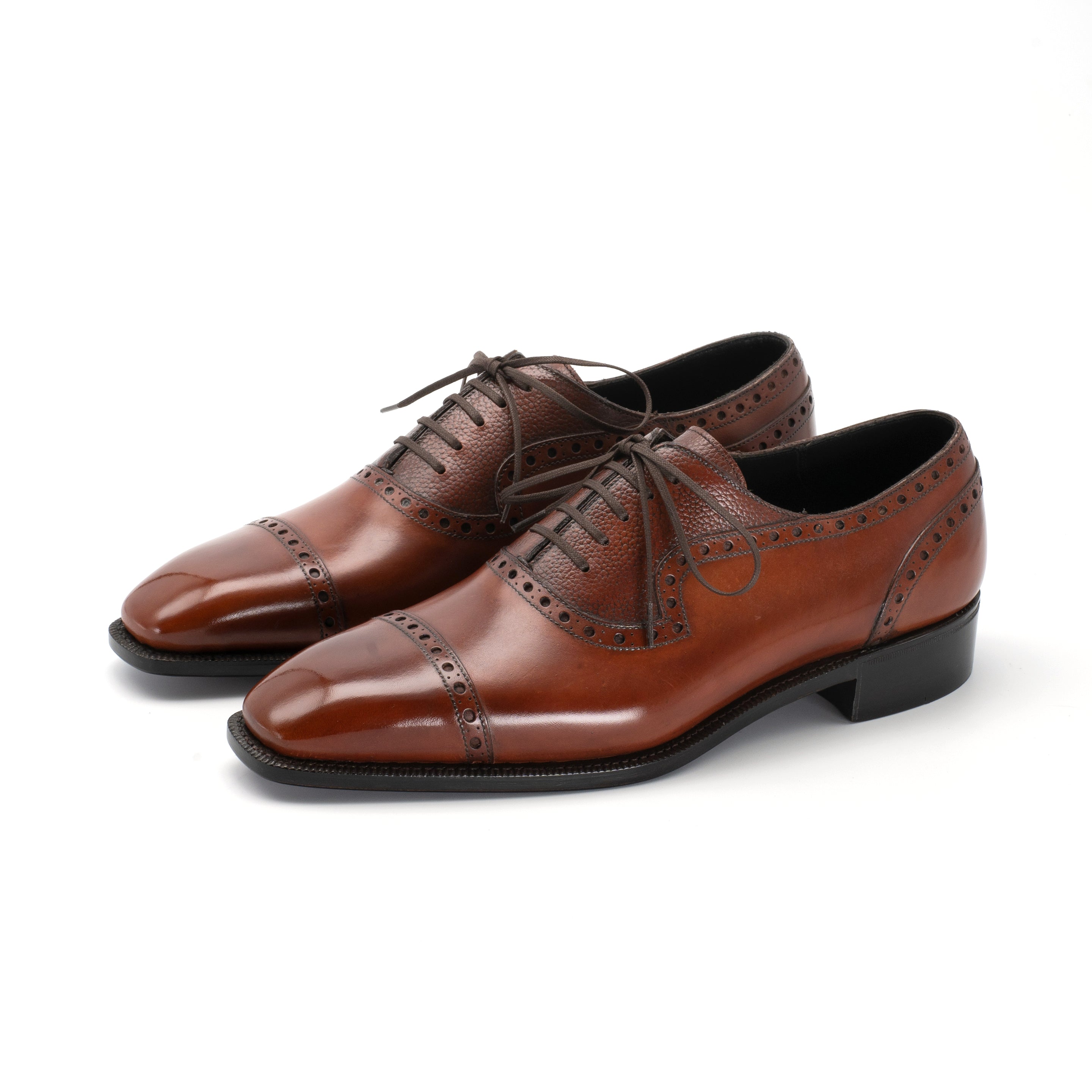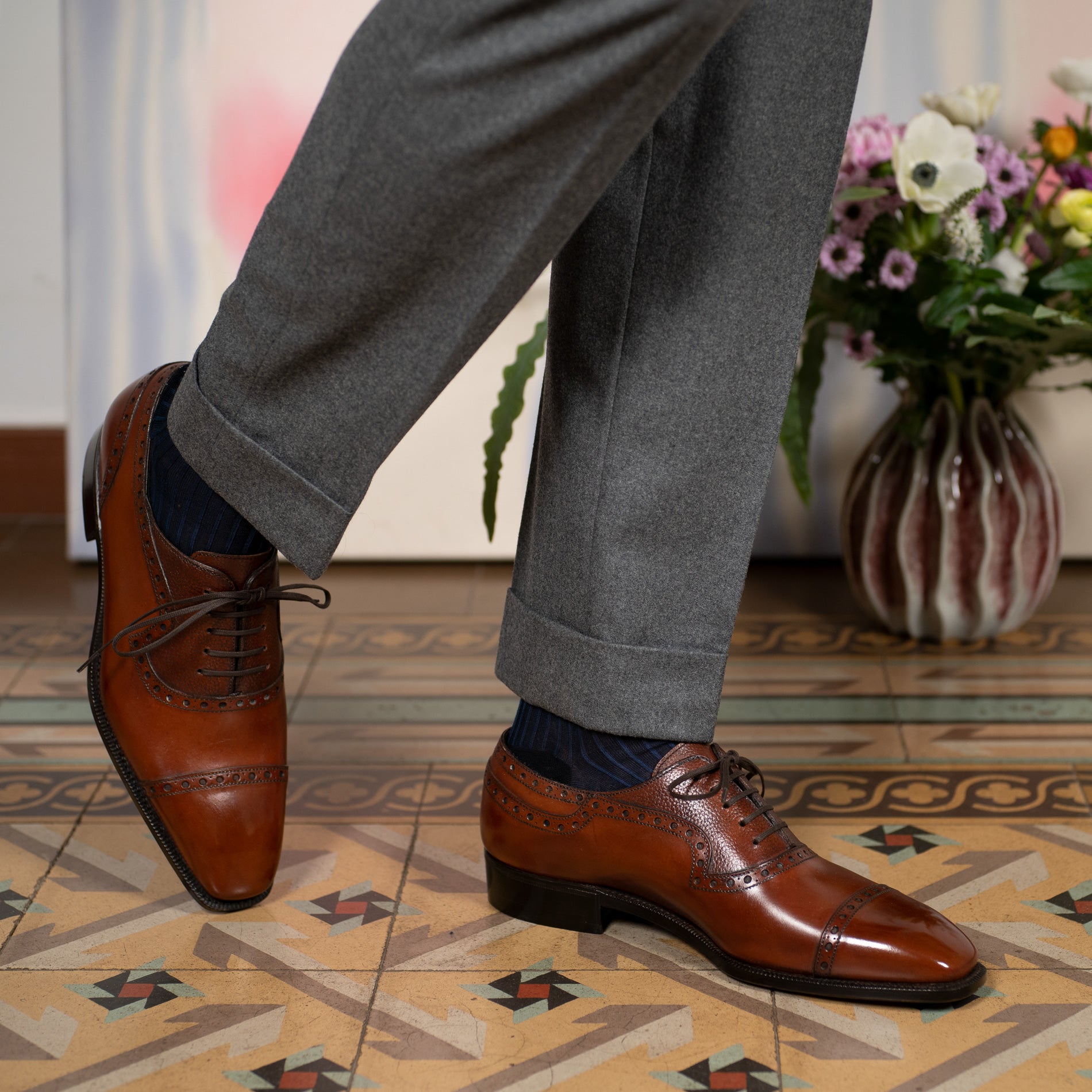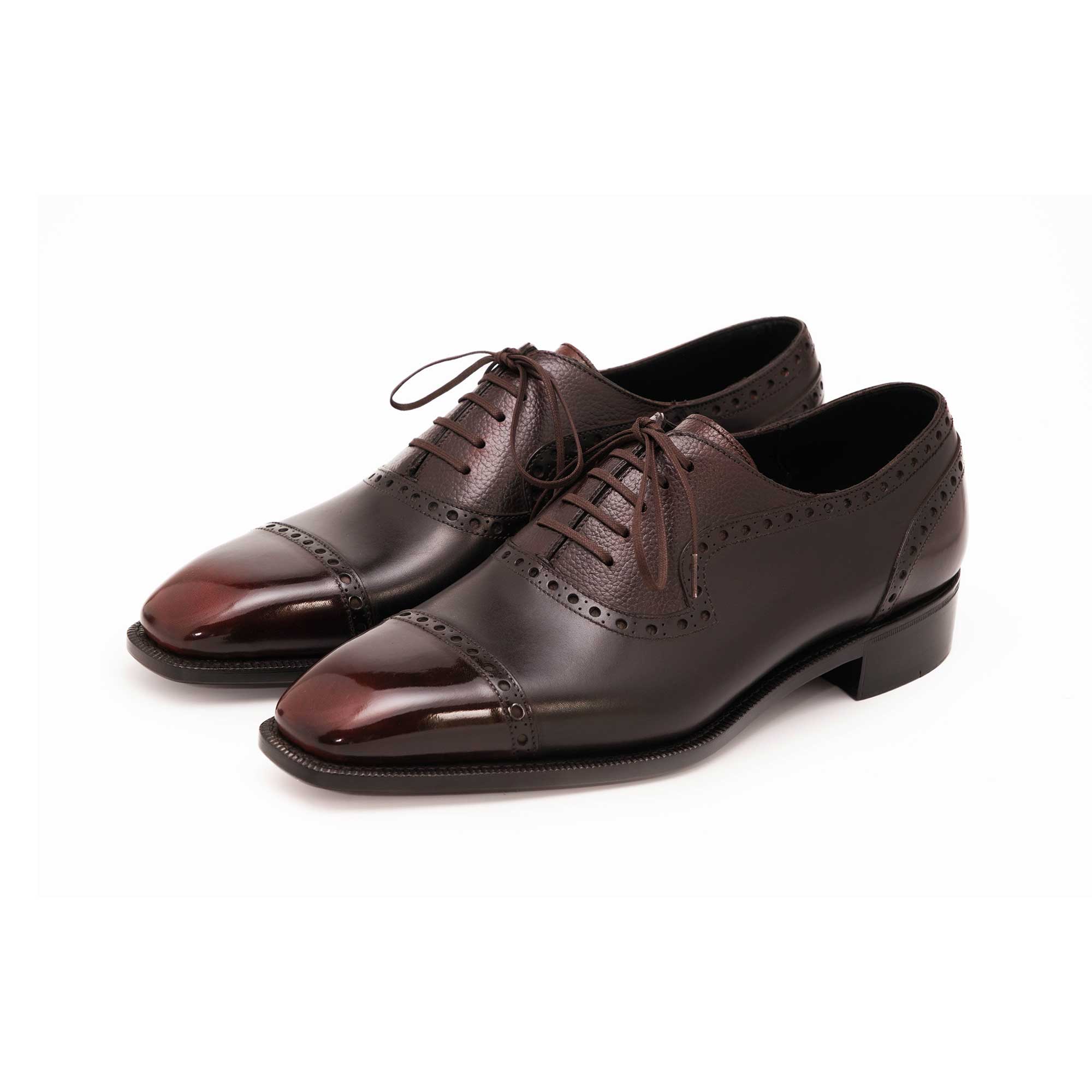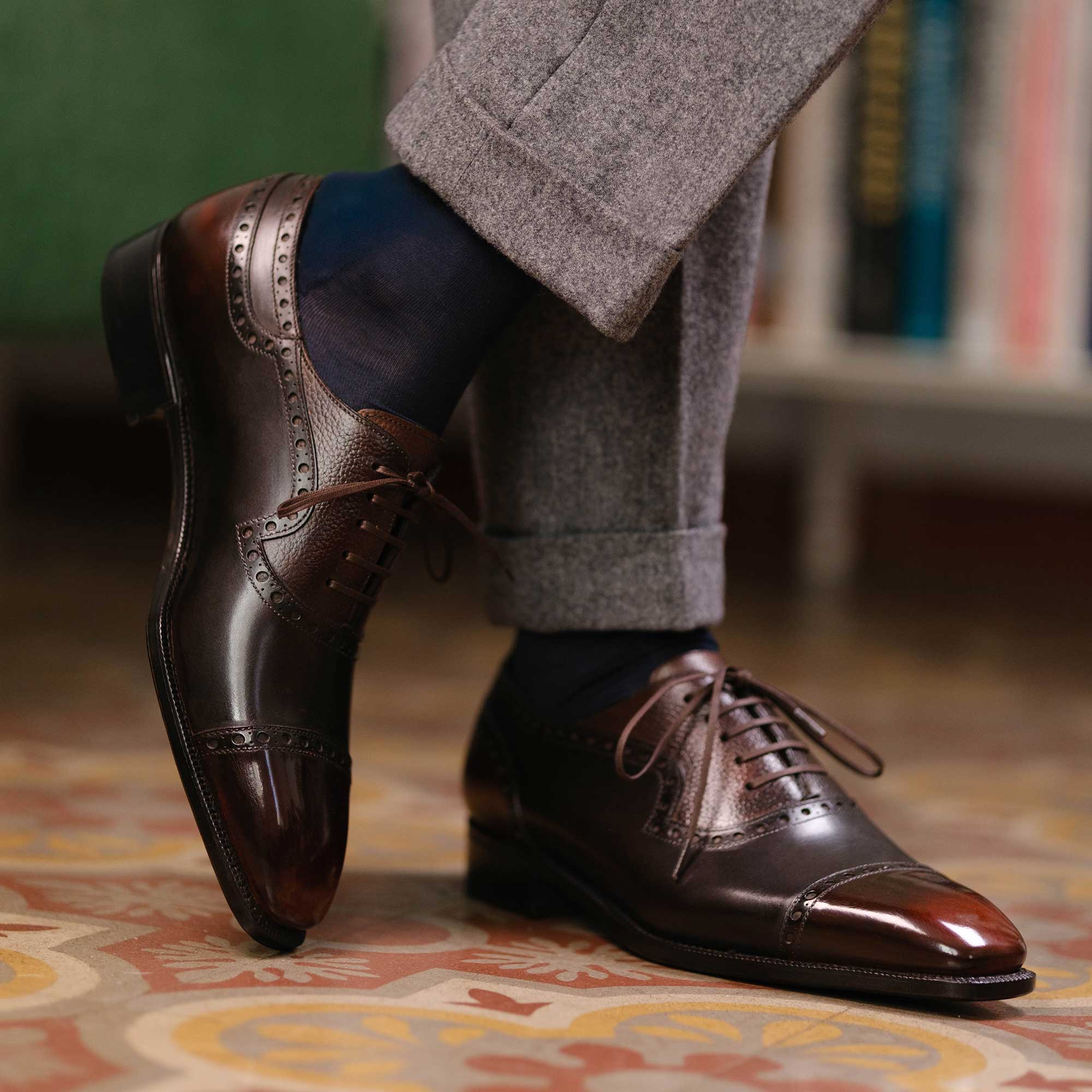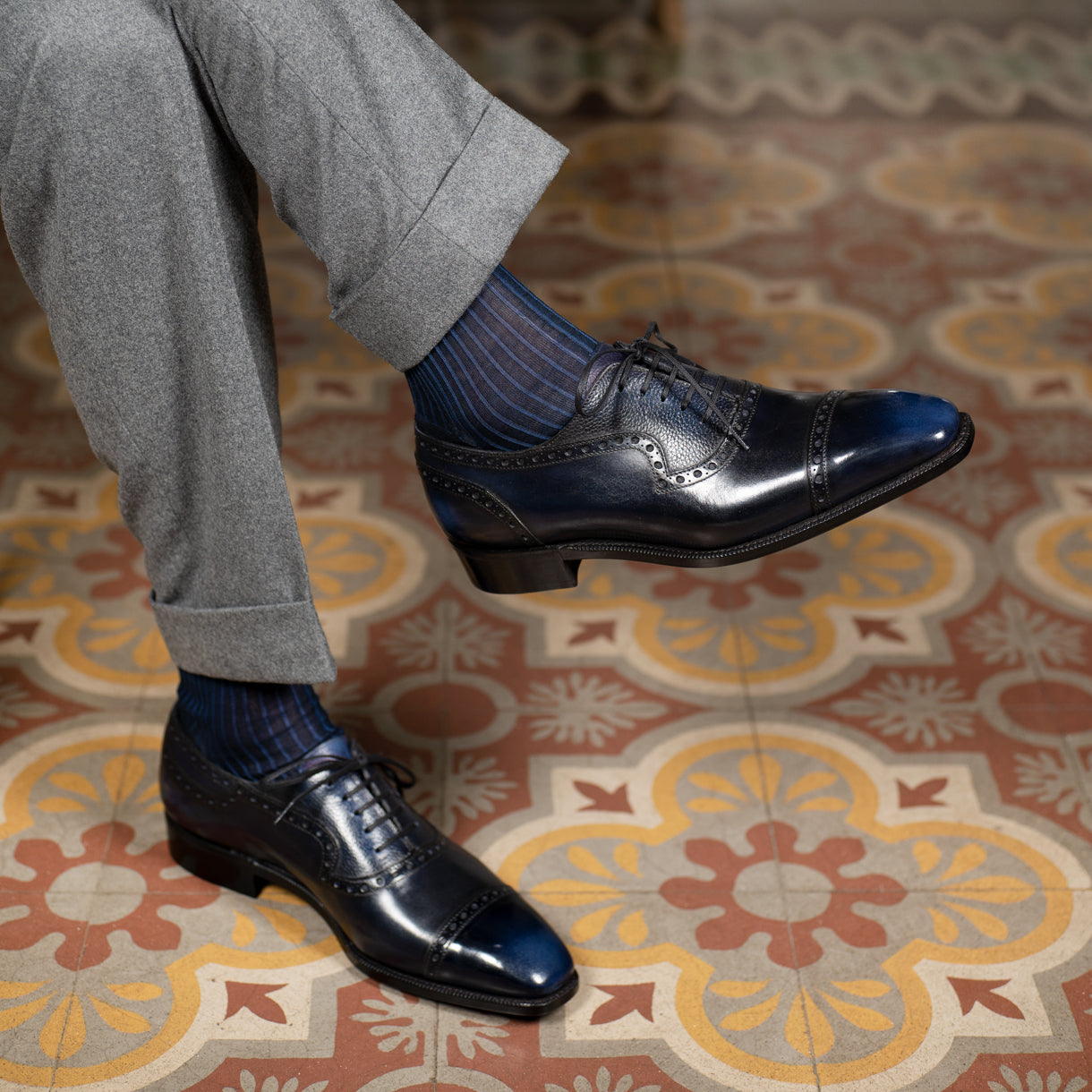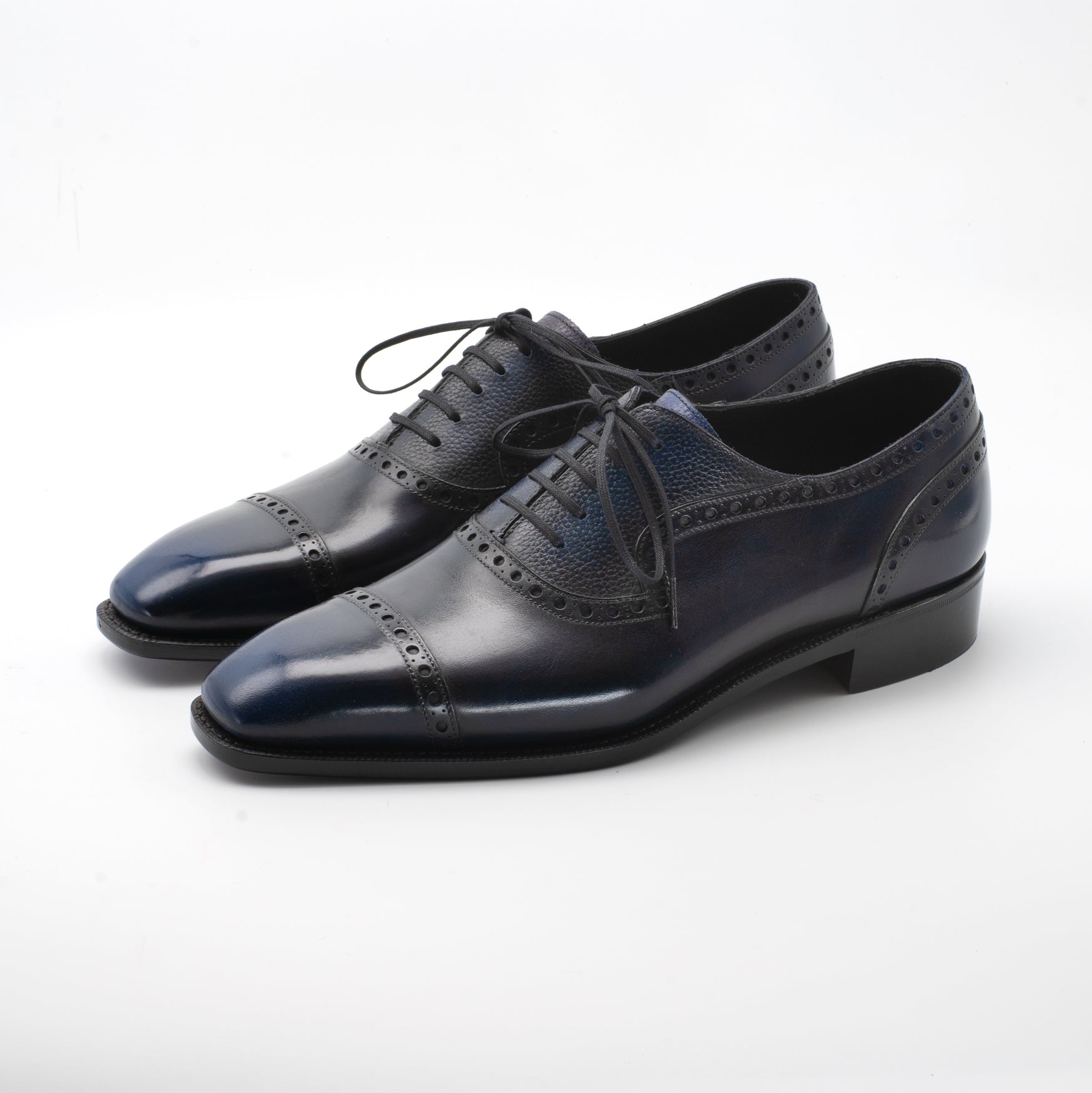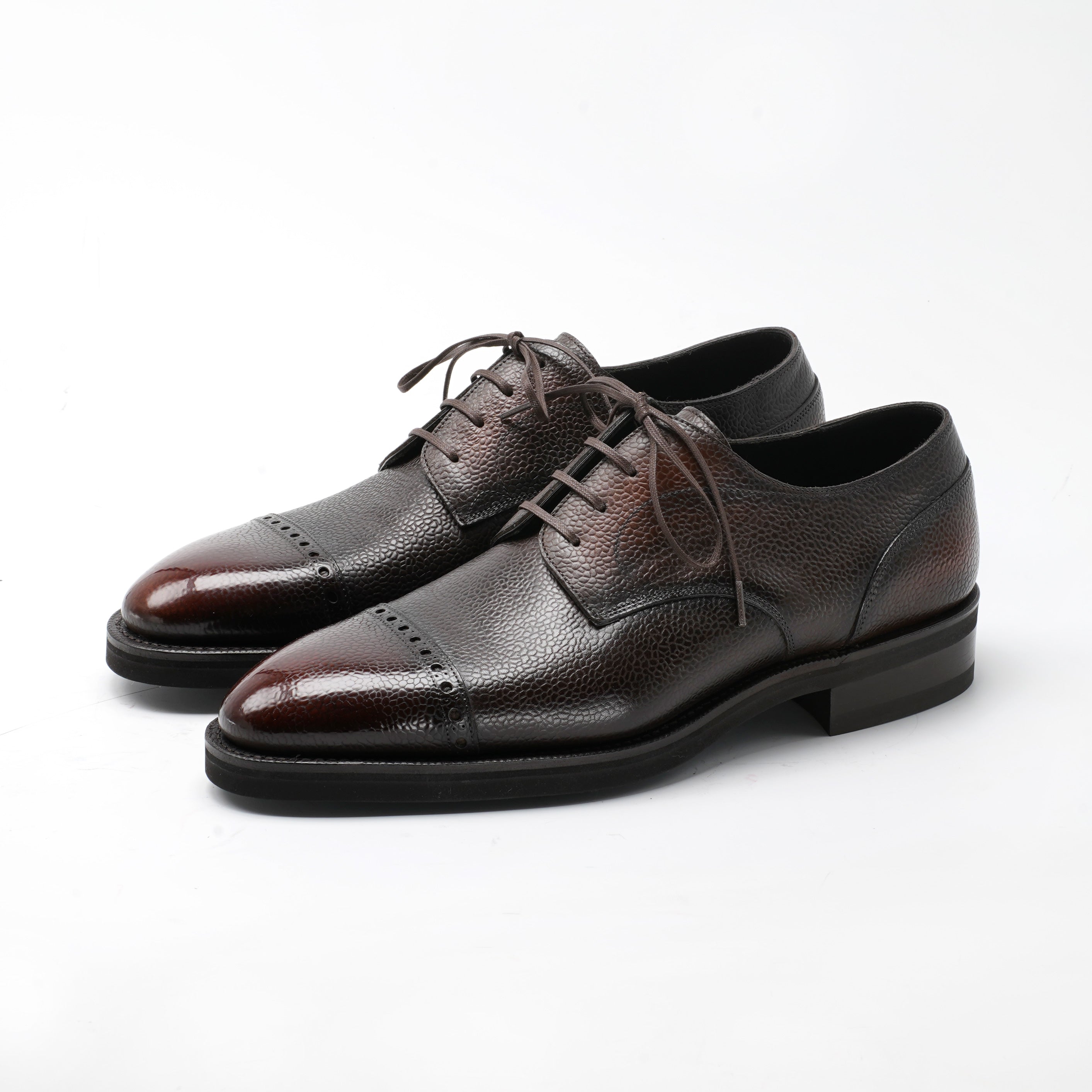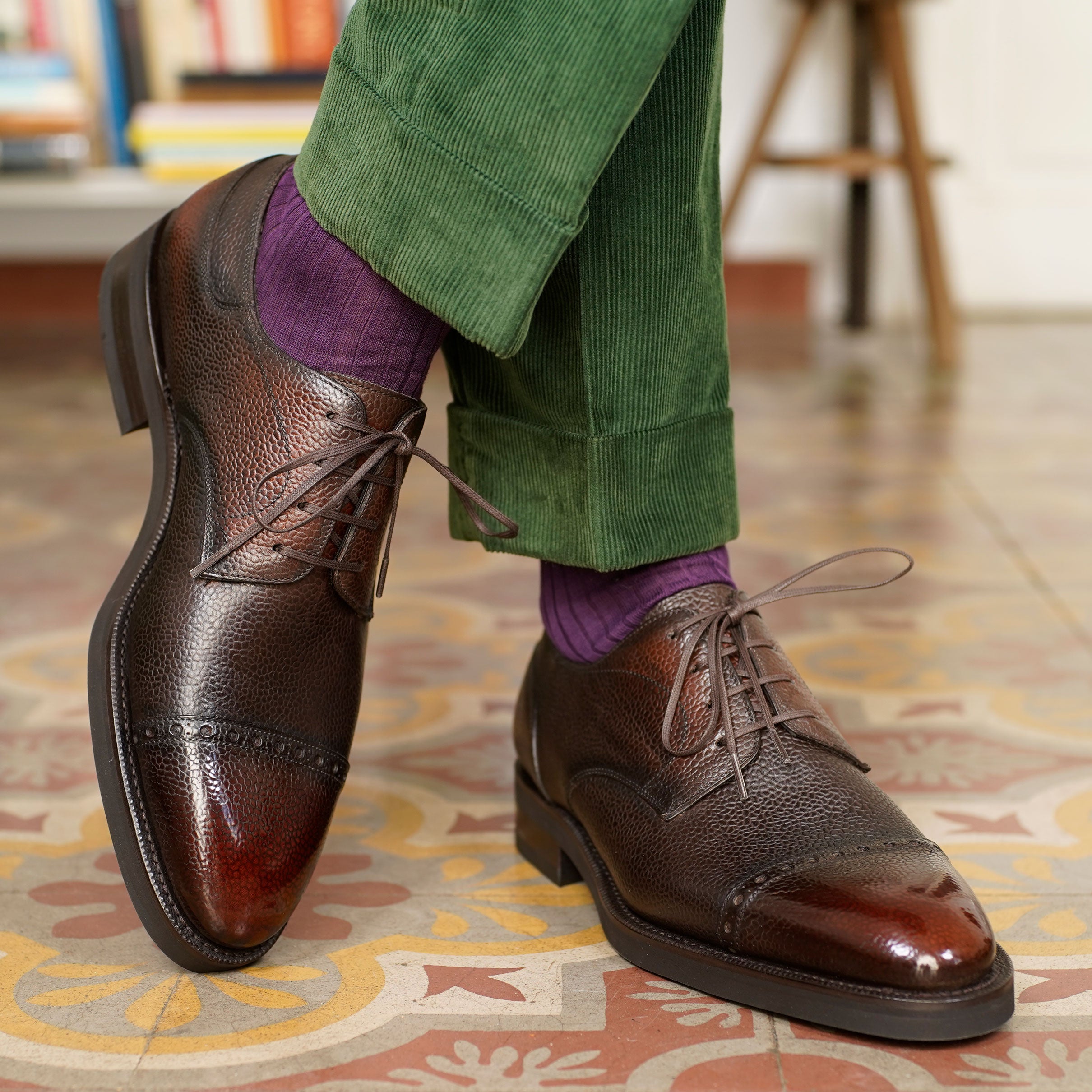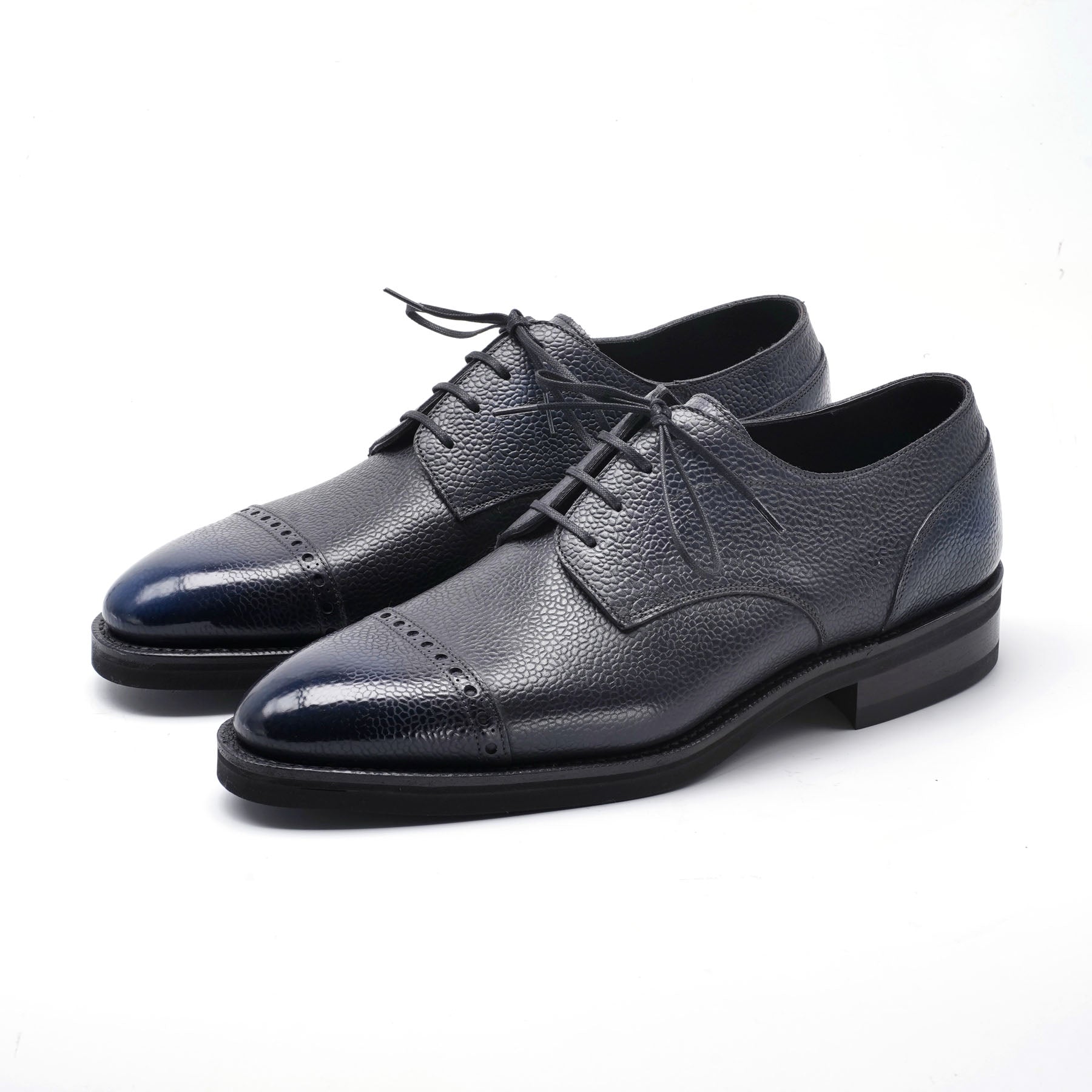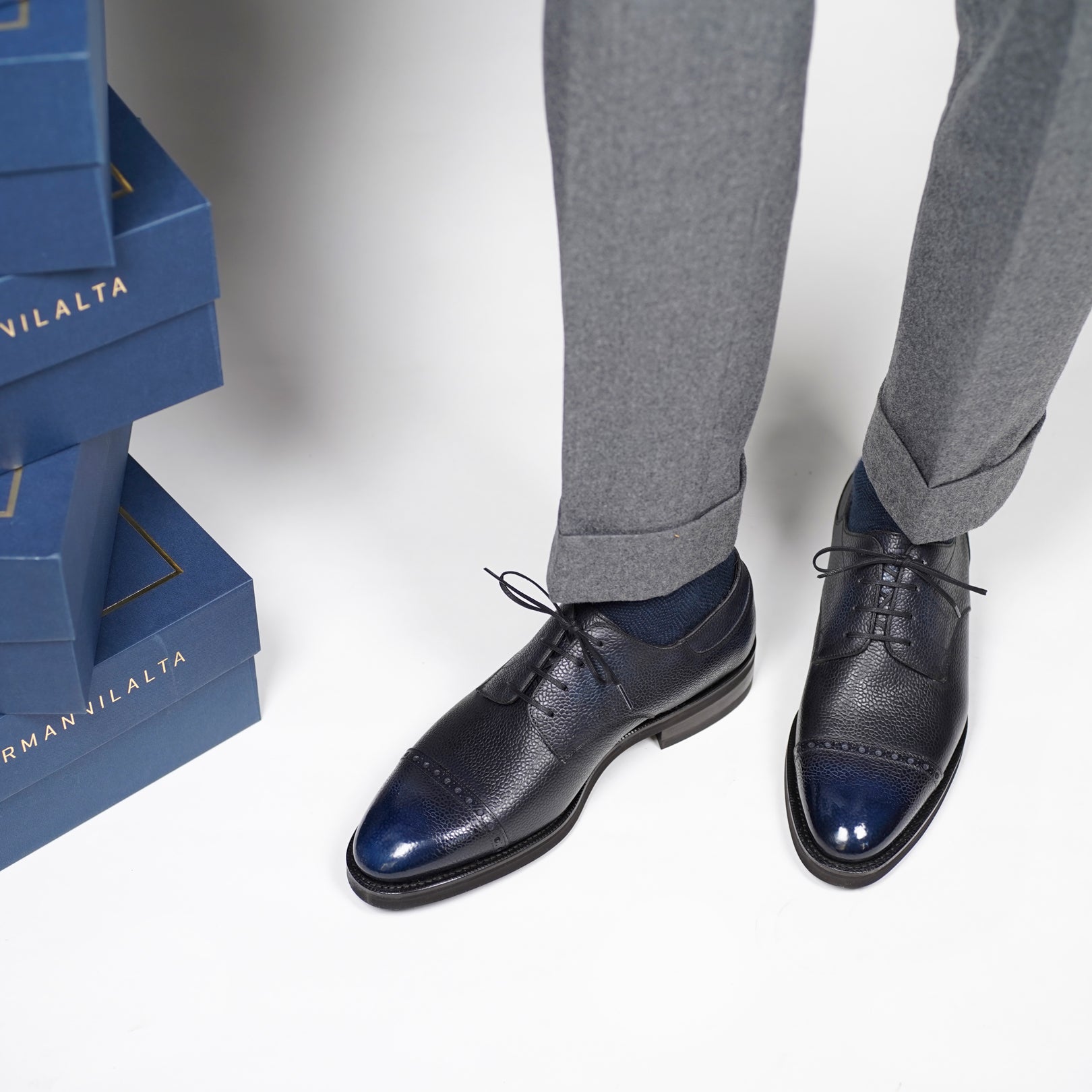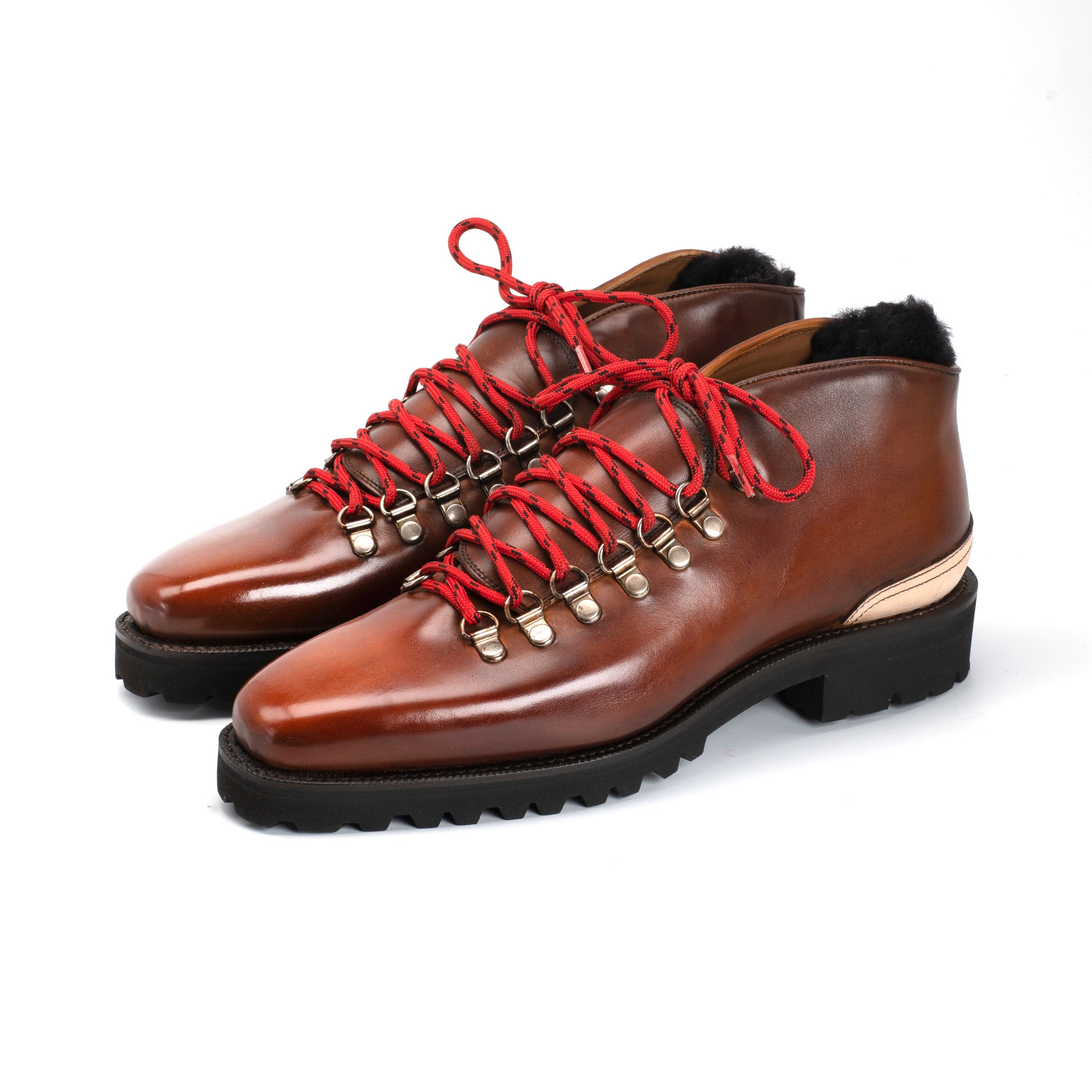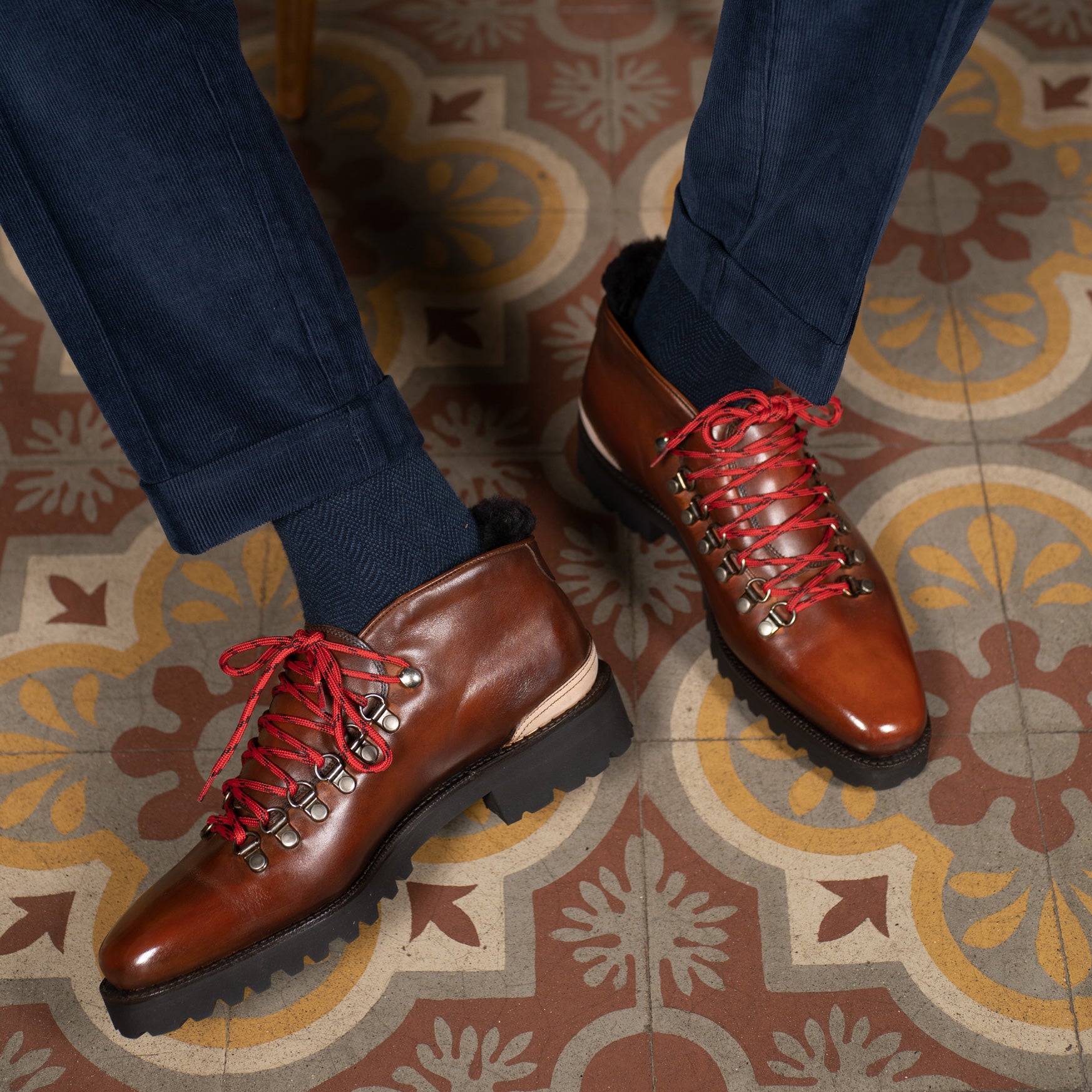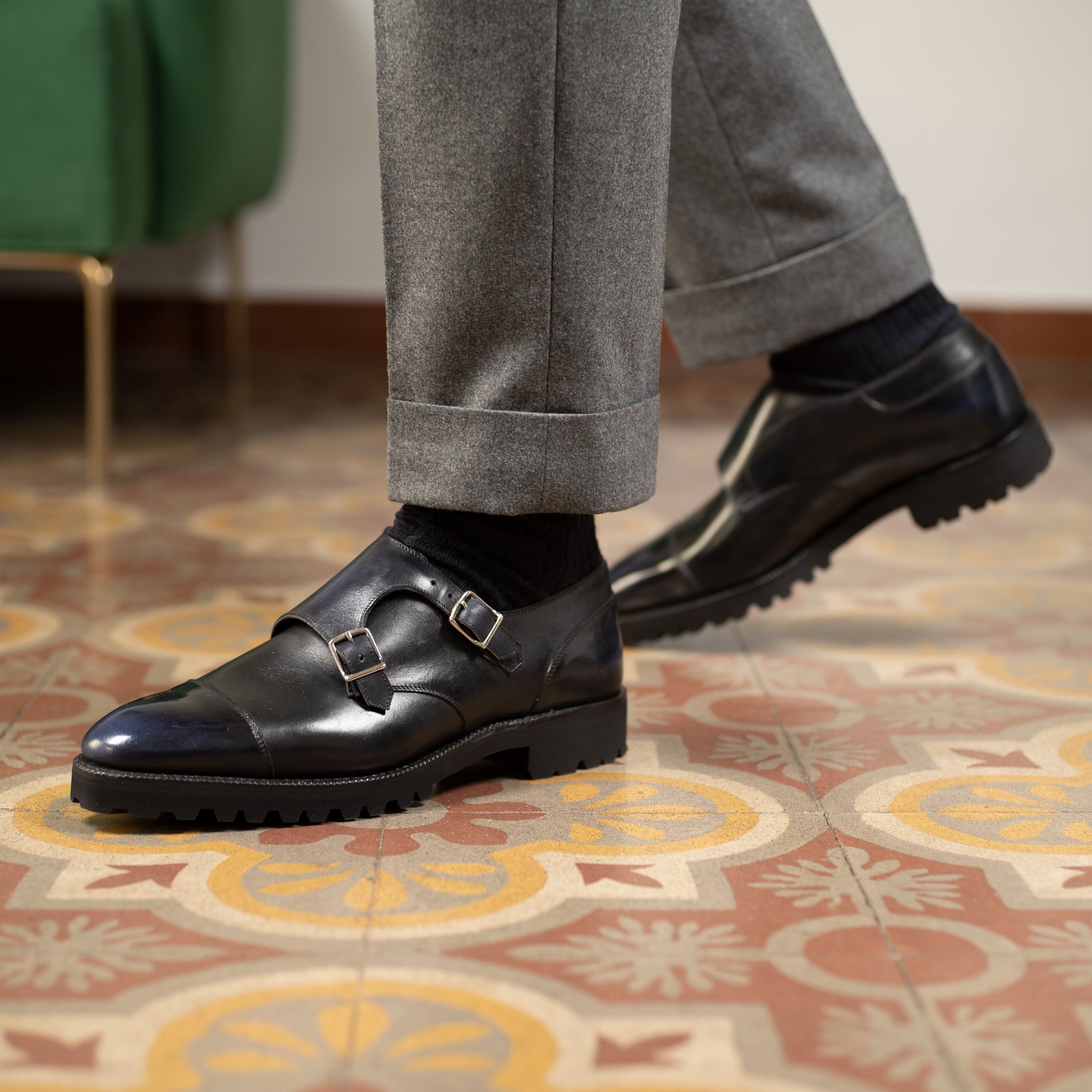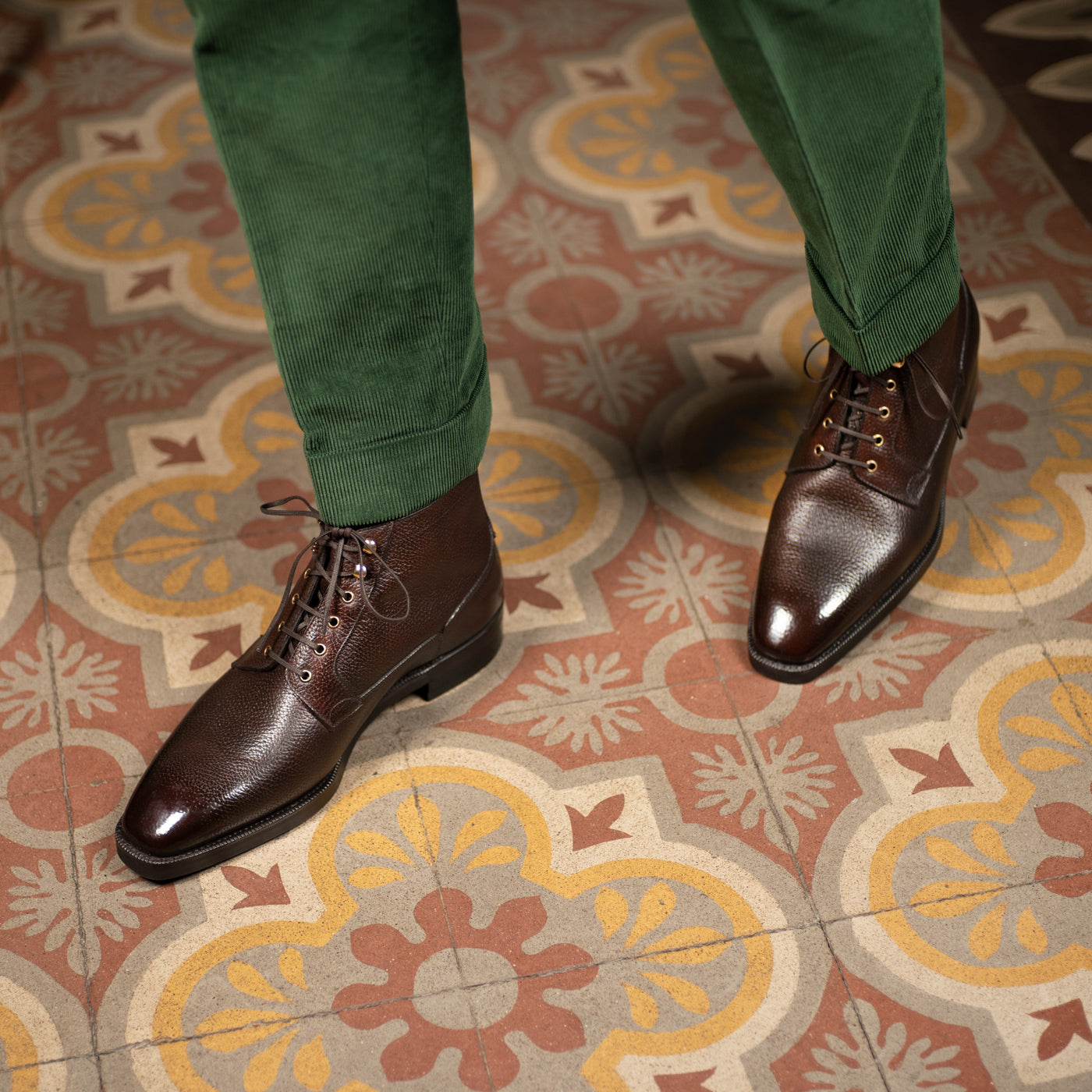The Art of Hand Finishing, Part 1
Before entering the world of ready-to-wear, Norman knew that the luxury market didn’t need another classic shoe line. There were plenty of brands that produced slight variations of your common oxford, derby, chukka, and chelsea and it wasn't necessary to do the same thing. Coming from the world of bespoke, where every shoe was a unique design and creation, Norman wasn’t interested in the mass production of common designs.
To differentiate his ready-to-wear line, Norman established the following 5 pillars that were essential to deliver a new and compelling, high-quality line of shoes to the luxury footwear market:
- Incorporate new concepts of design, construction, and process.
- Develop lasts that fit like bespoke shoes.
- Experiment with structure, material, and construction to craft shoes in new and improved ways.
- Design unique styles that breathe new life into the world of classic shoes.
- Unite the modern tools of today with the benefit and beauty of bespoke style hand finishing.
Unfortunately, in the world of ready-to-wear and fast fashion, most designers have either forgotten, never experienced, or take for granted the beauty, detail, and quality that one can create by hand. Since Norman came from the world of bespoke, it was essential to implement artisanal handwork in our ready-to-wear line since it enhances the quality of shoes and delivers results that are impossible to achieve in an industrial setting.
For this editorial, we decided to explore the process of our bespoke hand finishing, the fifth pillar. We chose to start with hand finishing because it is one of the first details of our Goodyear-welted Condal Collection that people notice and a process that we hope you can appreciate.
In Part 1 of The Art of Hand Finishing, we are focusing on the hand finishing of the sole and heel. We will discuss the finishing of the uppers at a later date.
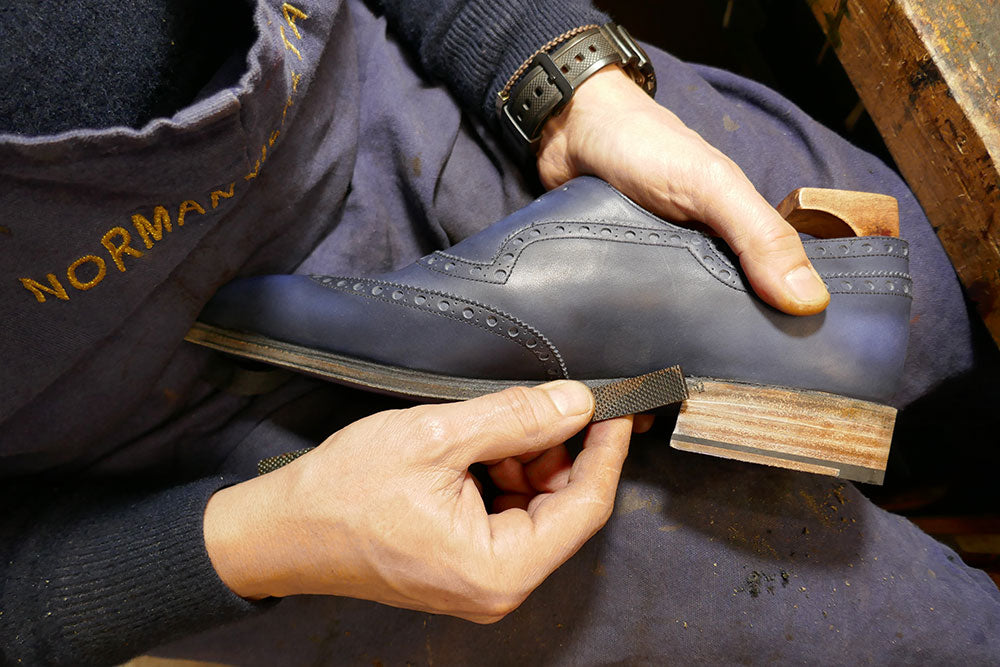 The first step of the hand finishing process is to create the general silhouette of the sole. Using a rasp we are able to file away and slowly shape the sole and heel so that it is in harmony with the silhouette of the upper. The goal is to sculpt the side of the welt and the sole so that the wall is nearly vertical.
The first step of the hand finishing process is to create the general silhouette of the sole. Using a rasp we are able to file away and slowly shape the sole and heel so that it is in harmony with the silhouette of the upper. The goal is to sculpt the side of the welt and the sole so that the wall is nearly vertical.
We use 3 mm thick glass, more commonly used for picture frames or old windows. This width allows us to cut the glass by hand into a size and shape that is ideal for this procedure. We first make a mark on the glass with the rasp and then break it by hand to create a piece that has a convex curvature on one side and a very sharp edge.
We use glass to shave and shape the leather of the sole edge and the heel to completely erase any marks left over from the rasp. This results in the final shape of the sole and heel with a smooth surface that is without any imperfections. The finisher knows when this has been achieved by the sensitive touch of his fingertips.
Note, in artisan work, the eye and touch are the most important senses needed in the process. A well trained eye can determine irregularities in shape or form, and a sensitive touch can realize imperfections on the surface, even from the far side of the shoe while holding it.

The use of glass is a skill that Norman learned while working for Stefano Bemer and is a standard procedure in bespoke shoe making. We’re not sure of the origins since glass is not a cheap material to source, so it probably is a relatively more recent addition to the shoe making process.

After use of the rasp and glass, we move on to multiple rounds sanding. We start with more course 180 grit, then move our way up to 280, 400, 600, and sometime even the very 800 grit.
The first two grits (180 and 280) are used to erase any marks left over from the glass. We use a flat piece of cork for the sanding of the heel since it allows us to apply the right amount of pressure. On the edge of the sole, we use our fingers since the tips of our fingers will help make the wall slightly concave. This shape will help when we use the irons later in the finishing process.

After finishing the first couple rounds of sanding the entire sole edge and heel, we sand a full round with 400 grit, then again with 400 grit and water, and finally 400 grit with soap and water.
We use a glycerin soap because of it's high fat content which is hydrophobic and helps to seal the leather.The soap, water, and sanding combination result in a glossy finish. The shine is not necessarily for aesthetic purposes. instead it is a sign that the leather has been sealed properly which will protect the sole from water.
Once we’ve achieved the smooth and glossy finish, we clean the heels with ammonia to remove any impurities, remains from the sandpaper, and excess fat.

After cleaning with ammonia, we apply the first round of ink to dye the soles by brush. We use a strong alcohol based ink because it helps to assure that if your shoe has any tough abrasions along the sole or heel that the natural light color of the leather will not show through.

After the ink has been applied and has had time to settle, we use traditional iron tools, heat, and water and soap to compress and seal the surface of the leather. This process will provide additional protection from moisture and daily use.
The irons include a fudge wheel, waist irons, heel finisher, heel roulette, and busetto.

We apply a size 11 fudge wheel on the top of the welt. In bespoke, this process is done before you stitch the welt since the wheel marks on the welt where to stitch by hand. In ready-to-wear this process is applied after the stitching, which is decorative and provides beautiful detailing along the welt.
Use of the fudge wheel is a technique that uses the whole body since you need to apply the same amount of pressure against a round and slippery wheel as you move the tool carefully along the welt and around the toe box of the shoe. This requires the perfect coordination of the legs, arms, and hands to move the wheel properly and neatly mark the welt in a clean manner.

We use waist irons to the seal edge of the welt and sole. This is very important because the side of the sole and heel suffer the most against the elements, grit from the streets, and the stride of your walk.
The heat and pressure increases the endurance of the sole and the welt since it helps to completely seal the fibers of the leather. The waist irons shape and press the edge in a way that minimizes the ability for any abrasions to split the leather and potentially open the channel, which will allow the channel to get wet and rot the thread.

Similar to the waist irons, we use a heel finisher to protect the heel from any damage that could be caused by hitting it against stairs or any objects. This tool presses and hardens the edge of the front heel and leaves a vertical line along the heel.

While also decorative, we use a heel roulette, another tool that takes very steady and precise hands to master. This tool seals the leather along the 1 mm edge of the heel block and the leather upper.

We also use the busetto along the heel which is shaped in a way that minimizes any marks left against the heel since it is slightly curved. The busetto is carefully rocked back and forth while pressing against the leather around the entire heel.
Note, the shapes of the iron tools are not arbitrary. It took hundreds of years for shoemakers to develop the profiles of their carefully crafted tools. A good shoemaker can actually know the nationality of the tools by looking at a shoe. For example, they will be able to note the difference between British, Italian, French, and Spanish shoes since the irons are distinct in shape and size.
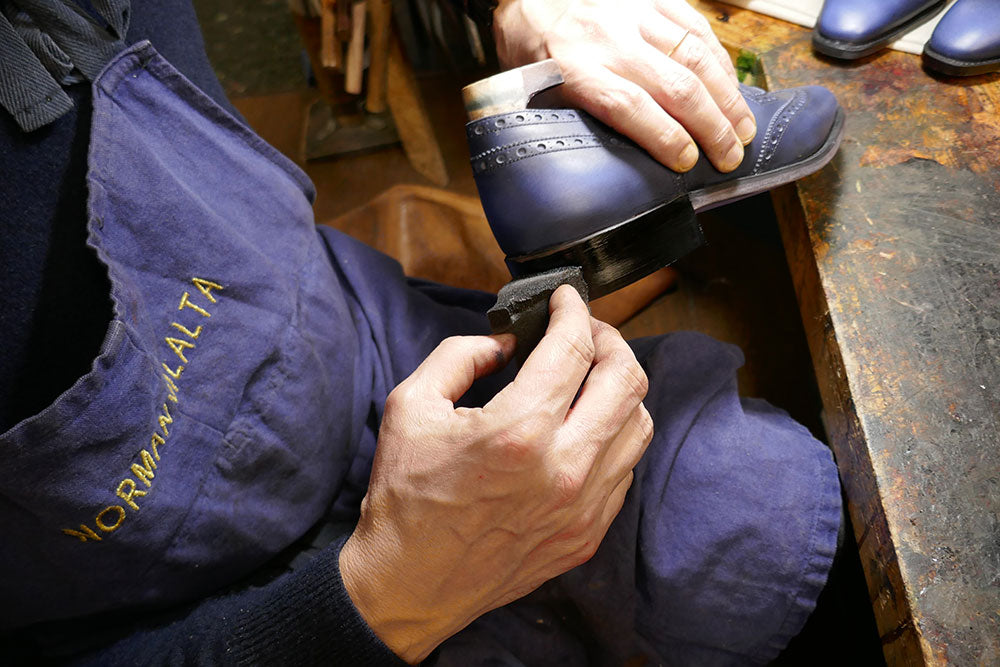
After using the irons to compress the sole, we apply water based ink with wax on the heel, sole, and welt with a sponge to create a more permanent color and also provide additional protection from water. We repeat this process three times and let the shoes rest in between layers so that the sole can absorb the dye and wax.

After applying three layers of ink and wax, we apply a hardened wax by hand, and use all of the iron tools again to create a final finish. This may seem repetitive and overkill, but this process creates a final sealing of the leather fibers and wax and creates the shiny finish that you see on bespoke shoes and our Goodyear-welted Condal Collection.

The last step is the finishing of the sole. When creating a closed channel sole, there are always some irregularities to the leather when initially cutting the leather to open the channel and sew the welt.
Although the channel is closed and sealed, along the edge where the channel was originally made, we apply an extra iron and wax which creates a decorative edge along the sole. More importantly, this tool creates an even stronger seal for the channel so that it won’t split open if hit against a hard surface.

On average the hand finishing process takes around 2.5 to 3 hours to finish the sole of each pair of our Goodyear-welted Condal Collection shoes by hand in our atelier in Barcelona.
The result of our hand finishing is a heel, sole, and welt that are beautifully shaped, compressed and sealed to protect from the elements, and detailed at the same level one can expect from a bespoke pair of shoes.
We are proud of the results of our hand finishing and hope that you can appreciate the skilled hand work and hours that went into your unique pair.
******
For more information on the shoe making process and to receive the latest product launches and private promotions, be sure to subscribe to our newsletter.

